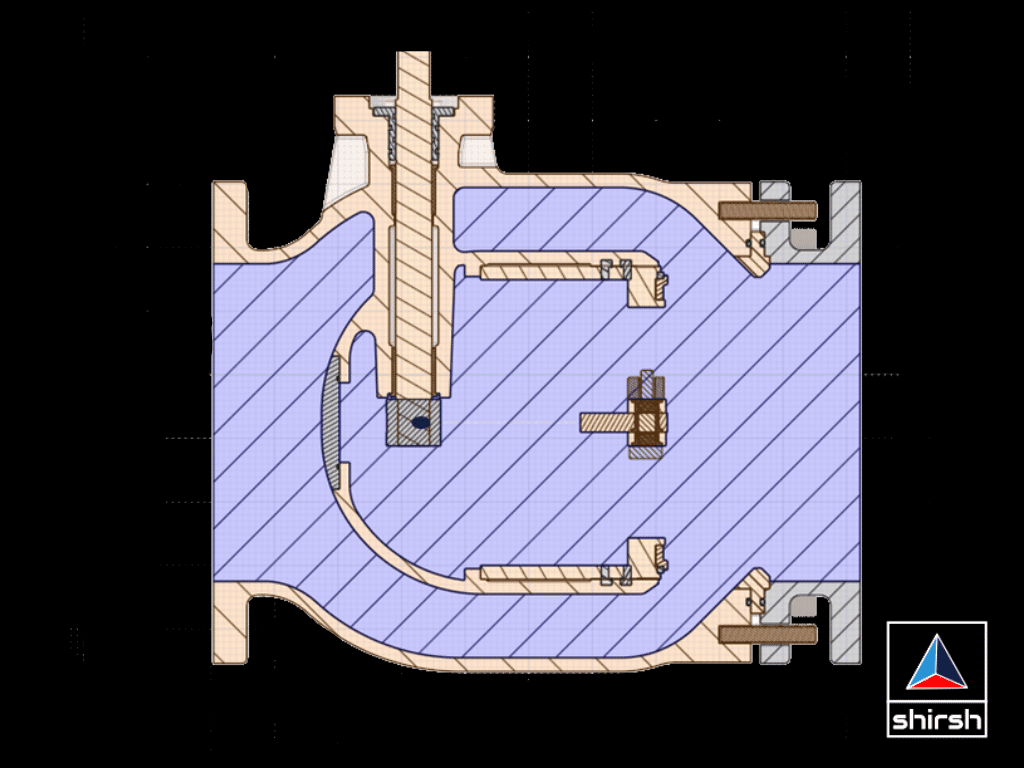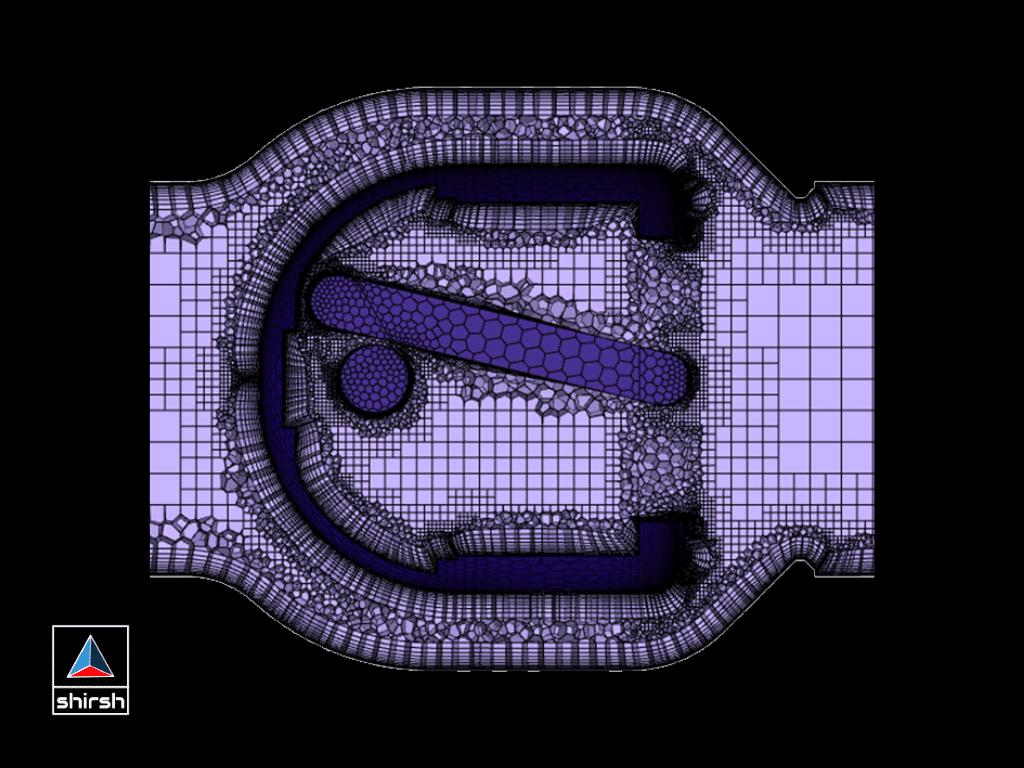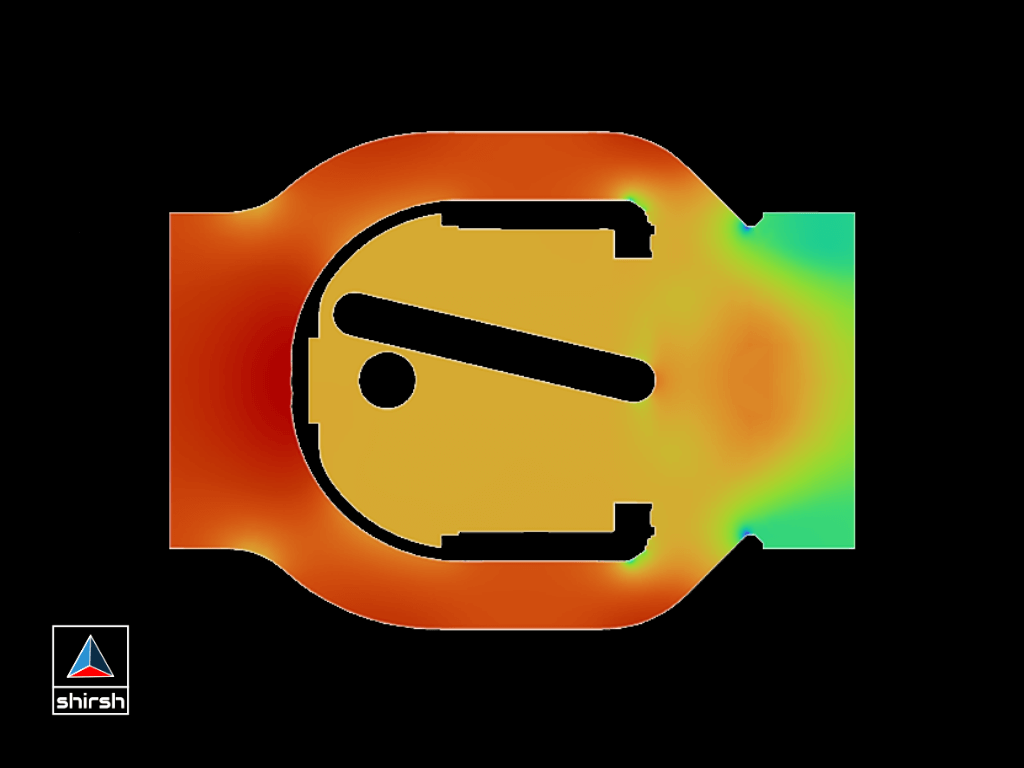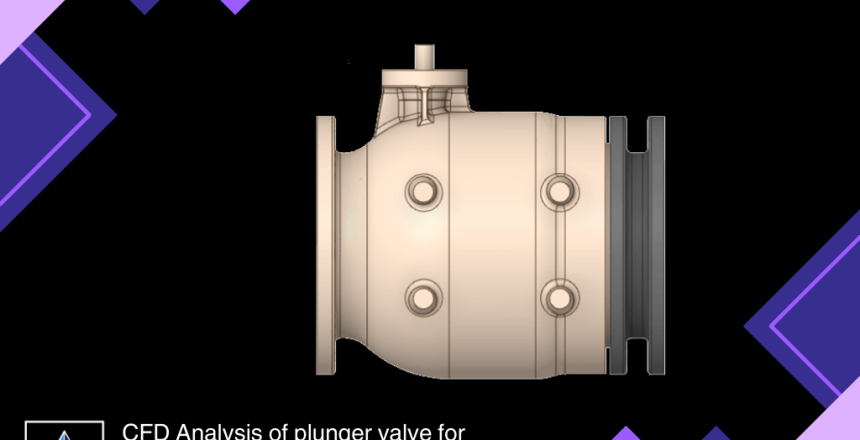Project Brief
This case study showcases a CFD analysis of a plunger valve to plot curves for pressure drop coefficient, head loss, and cavitation diagram, aiming to optimize valve performance and efficiency.
CHALLENGES AND OBJECTIVES
1.The client sought to understand the behavior of a plunger valve under different openings.
2.Requiring precise analysis to determine pressure drop coefficients and cavitation risks.
3. The main objective was to enhance valve efficiency and performance.

METHODOLOGY (SOLUTIONS IMPLEMENTED)
Modelling: Created a detailed 3D SolidWorks model of the plunger valve.
Boundary Conditions: Applied pressure outlet conditions and varied valve openings to simulate real-world scenarios.
Post-Processing: Analyzed pressure drops across the valve to derive pressure drop coefficient curves and calculate the Kv value at different openings.

BENEFITS (RESULTS ACHIEVED)
1.The Kv curve in the plunger valve exhibited an approximately linear variation.
2.Pressure drops were observed to increase with the rise in flow rate, providing crucial insights for optimizing valve settings.

SUMMARY OF PROJECT
The CFD analysis of the plunger valve yielded valuable insights into its performance characteristics, enabling the client to make informed decisions to improve efficiency and reduce cavitation risks. The study demonstrated the effectiveness of CFD analysis in optimizing valve design and performance.


